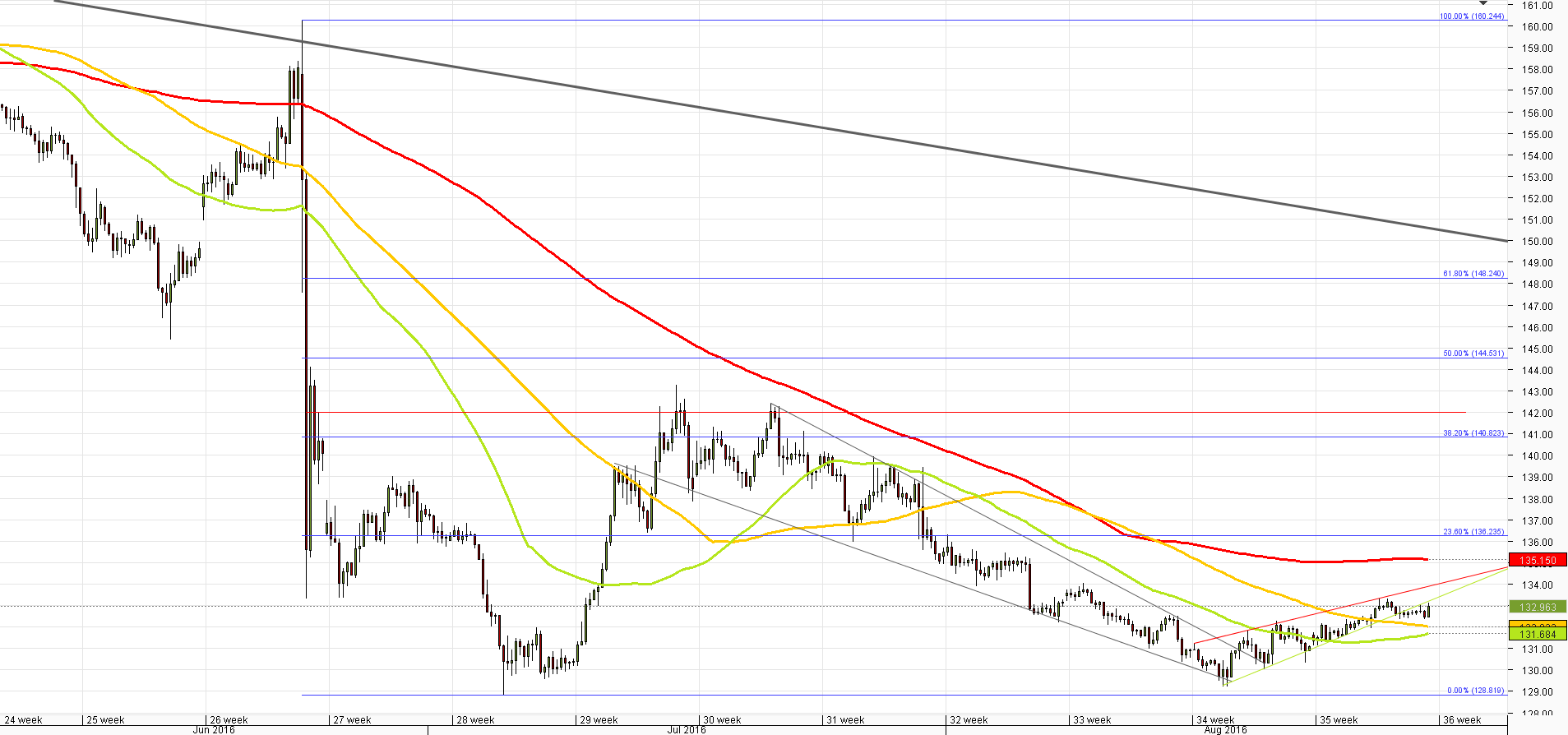Note: This section contains information in English only.
The overall outlook on the pair is bearish, as the rate trades under the 10-month trend-line that was initiated back in Q4 of 2015. Recently, the sell-off has intensified, as the price has distanced itself from the resistance line with the help of the Brexit vote.



Fri, 26 Aug 2016 15:41:23 GMT
Source: Dukascopy Bank SA
© Dukascopy Bank SA
Nevertheless, there are signs that the pair might recover considerably over the upcoming months. Four-hour and daily charts show a bullish double bottom the pair has formed over the last two months after establishing a solid support area circa 130 yen. So far the rate has been rather successful in bouncing from this level the last two weeks, and the second trough of the pattern will be completed with a test of the neckline at 142 yen. An additional bullish sign is that the pair has been overstepping the lower Bollinger Band quite a few times recently, suggesting the pair to be oversold. Eventually, if the neckline gets breached, this will open a path back towards the major falling trendline at 147.50.
© Dukascopy Bank SA
The bullish scenario, however, is not supported by the SWFX sentiment. The measure shows preponderance of long positions, which in turn increases vulnerability of the pair to a decline. Weekly and monthly technical indicators are also against a rally, as they mostly give ‘sell' signals. The bearish crossover of 55-period SMA and 200-period SMA implies continuation of the general downtrend, with the monthly S1 at 128.18 as a target. In order to test this level the pair will have to drop to the yearly low first, which lies above – around 130 yen. The four-year lows at 120.30 will be tested in case of a breakout below the yearly support line.
© Dukascopy Bank SA
An additional argument in favour of a bearish view of GBP/JPY is observed in lower timeframes, such as the four-hour chart, where the pair's movements are contained between the upper Bollinger Band and the 20-period SMA, meaning the pair is overbought and thus unlikely to extend a rebound from 130.
UK GDP grew 0.6% in the second quarter, which coincided with expectations, leaving little room for surprise jumps in the Pound value. A set of other economic data induced volatility, causing a 0.37% dip at most, but a lack of surprising figures failed to move the markets substantially. The pair will potentially experience more volatility later today, as Kuroda speaks at 4:25 pm GMT.
Actual Topics
Subscribe to "Fundamental Analysis" feed
Souscrire
To learn more about Dukascopy Bank CFD / Forex trading platform, SWFX and other trading related information,
please call us or make callback request.
please call us or make callback request.
For further information regarding potential cooperation,
please call us or make callback request.
please call us or make callback request.
To learn more about Dukascopy Bank Binary Options
/ Forex trading platform, SWFX and other trading related information,
please call us or make callback request.
please call us or make callback request.
To learn more about Dukascopy Bank CFD / Forex trading platform, SWFX and other trading related information,
please call us or make callback request.
please call us or make callback request.
To learn more about Crypto Trading / CFD / Forex trading platform, SWFX and other trading related information,
please call us or make callback request.
please call us or make callback request.
To learn more about Business Introducer and other trading related information,
please call us or make callback request.
please call us or make callback request.
For further information regarding potential cooperation,
please call us or make callback request.
please call us or make callback request.